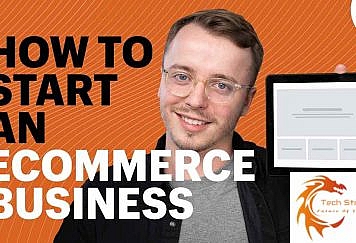Category marketing is an effective strategy where companies group their products or services based on similarities to discern how to better serve the target audience.
The method considers the customer’s buying decisions for each of the goods and uses the data to decide how to rework their efforts to stand out among the competition. The objective is to promote the brand as it relates to each product or service group.
The information allows businesses to understand the buyer’s persona by showing how they use the items so the favored choices can be highlighted with the marketing campaign over those that sell less often. In this way, the company can more readily service the audience.
How To Effectively Approach the Category Marketing Strategy
By determining who the competitors are, brands can differentiate their goods from similar items sold by other companies by showcasing the benefits in comparison.
This is the premise behind category marketing, an effective strategy where goods and services are promoted in groups that relate one product to the others. The goal is to differentiate the brand’s benefits from those of competitors after discovering who the competition is.
The data details the buyer’s preferences so the company can more readily cater to the audience’s needs. The items sold most often are promoted over those less favored. Go to this link to find out why category marketing is an effective strategy, and then follow here for the primary categories characterized by companies.
The Convenience Items
This category represents the goods and services most often sought by the target group. The products are budget-friendly, with the buyer having less distinction as to why they choose one brand over the other.
Typically, in this grouping, the consumer will buy an item like dish soap and remain loyal to purchasing that particular brand moving forward. The choice is based on the least costly and personal preferences.
The customer doesn’t put as much time and effort into selecting what they buy in this category since the costs and quality are relatively similar from one brand to the next. The company’s most advantageous approach in this grouping is establishing brand awareness.
The business will consider item placement as part of its strategy; considering those goods that are more readily seen and within reach will draw the consumer to them. As an example, placement near the checkout counter or at the end of an aisle encourages impulsive spending.
The Shopping List
Customers will put more thought into what they buy under the shopping category by performing more research than they would with convenience choices. The target audience buys these goods or services less often since these require a bigger investment.
In this grouping, you’ll find things like electronics or possibly the purchase of a new home. These items affect the customer’s lifestyle, meaning more effort will need to be put into their final decision.
Each company’s reputation will be considered when choosing among the brands to find the best solution for their needs. A consumer will search online routinely when looking for their next home purchase and attend many open houses before selecting a suitable option.
Brands need to focus more on attracting customers with value for the quality offered. That will mean paying attention to what the competitor is offering in a price range and presenting a better or comparable-quality product but with a lower price point. The objective is to stand out from the competition.
The Specialty Items
Specialty items are more exclusive and unique for the target audience, with many people being loyal to a particular good or service. More attention is given to which offers the most beneficial solution when researching instead of focusing on how brands compare.
In this category, you would find investments like vehicles with specific makes and models only sold in distinct showrooms. When a customer is looking for an SUV, for example, to accommodate family needs, they will only shop with brands that offer SUVs to solve their lifestyle need.
In that same example, a company selling SUVs will promote the benefits of their products for growing families. You can also highlight how the vehicle’s presentation will impact the buyer’s personality most. For luxury auto brands, the consumer will showcase their status by investing in these products.
Or a sports car will speak to the fast lifestyle, a more adventurous type. The company must focus its marketing efforts on the buyer’s persona to target that specific audience. Learn about writing a marketing plan and developing a strategy at https://www.business.qld.gov.au/.
The Unsought Category
This category is related more to the less-often purchased goods and services that the consumer has a minimal understanding of or doesn’t consider when shopping, like batteries. A customer seldom needs to buy batteries unless perhaps the TV remote control suddenly doesn’t work.
Other items rarely sought include those people buy when they feel a threat or risk, including life insurance policies or smoke detectors.
When marketing these goods and services, the priority is to make the public more aware of the need and that the items are available when the need arises, reminding them to prepare for that need.
In this instance, you would highlight difficulties the consumer group might endure when they don’t have these products or services on hand.
The objective is to point out how your brand’s benefits compare to the competition, with yours offering the most advantages. The unsought products include impulse buying like the latest toaster or blender, explaining to the consumer group why they need to run out and get one.
Final Thought
With category marketing, various products or services are divided into four distinct groups. This approach gives brands a better vision of their buyer’s persona with the company catering to that specific audience.
The objective is to show the customers how the business’s goods or services address their needs more effectively than the competitor. The favored items would be promoted more heavily than the less popular or rarely purchased ones.
When the target audience is presented with a viable, quality, and cost-efficient solution to their specific circumstances, they’ll be more likely to buy.
Follow TechStrange for more!






